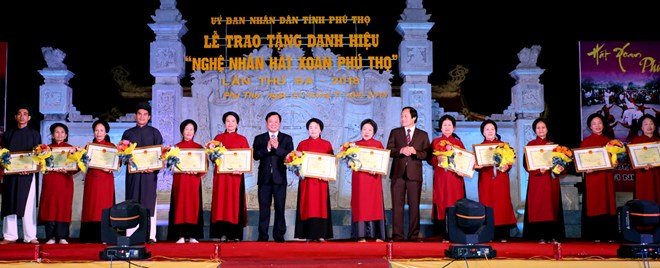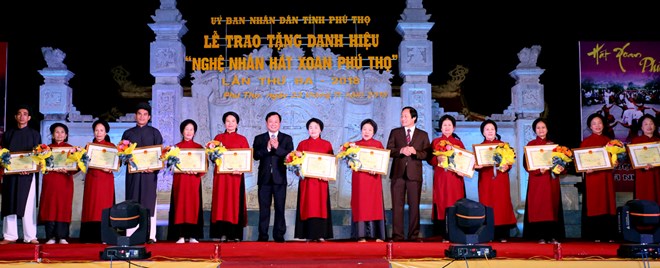



Phu Tho has additional 14 Xoan singing artisans (Source:
phutho.gov.vn)
Speaking at a ceremony on November 23, Vice Chairman of the
provincial People’s Committee Ho Dai Dung said that the 14 newly-recognised
artisans are prestigious and expert in the musical art.
To date, Phu Tho has 66 Xoan singing artisans recognised by the State,
including 20 Meritorious Artists.
Closely linked to the worship of Hung Kings, Xoan singing is a religious
practice rooted in the ancestor worship of the Vietnamese people. It is
traditionally performed during the first two months of the lunar calendar in
holy places such as temples, sanctuaries and communal houses.
There are three forms of Xoan singing: worship singing for the Hung kings and
village guardian spirits; ritual singing for good crops, health and luck, and
festival singing where villagers alternate male and female voices in a form of
courtship.
The Vietnamese musical tradition was inscribed on the UNESCO List of Intangible
Cultural Heritage in Need of Urgent Safeguarding in 2011 due to declining
appreciation of this tradition, notably among young people.
The performing art was transferred to the Representative List of the Intangible
Cultural Heritage of Humanity in December 2017 in recognition of efforts by the
local communities and the national authorities to reinforce the viability of
Xoan singing.
Phu Tho now has 34 Xoan singing clubs with 1,557 members.
Source: VNA